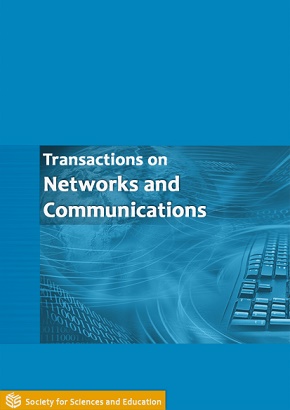A Forensics Analysis of ICMP Flooded DDoS Attack using WireShark
Forensics Analysis of ICMP Flooded DDoS Attack using WireShark
DOI:
https://doi.org/10.14738/tnc.83.8250Keywords:
Denial of Service; Distributed Denial of Service; Internet Control Message Protocol FLOOD; PING.Abstract
The usage of Denial of Service (DoS) and Distributed Denial of Service (DDoS) packets by the assailant may change and dependent on various sorts of administrations and protocols. A flooding DDoS attack depends on an immense volume of assault traffic which is named as a Flooding based DDoS packet. Flooding-based DDoS packet endeavors to block the injured individual's system transfer speed with genuine-looking however undesirable IP information. Because of which Legitimate IP packets can’t arrive at the unfortunate casualty in view of the absence of data transfer capacity asset. Internet Control Message Protocol (ICMP) Flood started by sending countless ICMP packets to a remote host. Thus, the deceived framework's assets will be devoured by taking care of the assaulting packets, which in the long run makes the framework be inaccessible by different customers. In this paper, we distinguish of ICMP Flood DDoS packet by utilizing WireShark.
References
[2]. Sieklik, Boris, Richard Macfarlane, and William J. Buchanan. "Evaluation of TFTP DDoS amplification attack." computers & security 57 (2016): 67-92.
[3]. Conta, Alex, Stephen Deering, and Mukesh Gupta. Internet control message protocol (icmpv6) for the internet protocol version 6 (ipv6) specification. RFC 2463, December, 1998.
[4]. Gont, Fernando. ICMP attacks against TCP. RFC 5927, July, 2010.
[5]. Elejla, Omar E., Mohammed Anbar, and Bahari Belaton. "ICMPv6-based DoS and DDoS attacks and defense mechanisms." IETE Technical Review 34, no. 4 (2017): 390-407
[6]. K. R. Fall and W. R. Stevens, TCP/IP illustrated, volume 1: The protocols. addison- Wesley, 2011.
[7]. A. Garg and A. N. Reddy, “Mitigation of dos attacks through QoS regulation,” Microprocessors and Microsystems, vol.28, no.10, pp.521– 530, 2004.
[8]. D.H Raibhagkar, Dr. S. S Sherekar, Dr. V. M Thakare,21st May,2017, “DDoS Attack on Cloud Access” International Journal on New Frontiers of Engineering, Science, Management and Humanities. Vol. 6, Issue 5, 53-57.
[9]. Harshita, Ruchikaa Nayyar, March-April 2017, “Detection of ICMP Flood DDoS Attack, International Journal of Computer Science Trends and Technology (IJCST)”, Vol.5 Issue2, 199-205.
[10]. Chauhan, Keyur, and Vivek Prasad. "Distributed denial of service (ddos) attack techniques and prevention on cloud environment." International Journal of Innovations & Advancement in Computer Science 4 (2015).
[11]. Sri, K. Santhi, and P. R. S. M. Lakshmi. "DDoS Attacks, Detection Parameters and Mitigation in Cloud Environment." vol 3 (2017): 1-4.
[12]. Rajnish Kumar Misra, Amarnath Singh, Vipin Kumar Gupta, May-June, 2015 “Study of Recent Trends of Distributed Denial of Service Attack and Handling Approach”, International Journal of Computer Science Trends and Technology (IJCST), Volume 3, Issue 3, 13-17.






